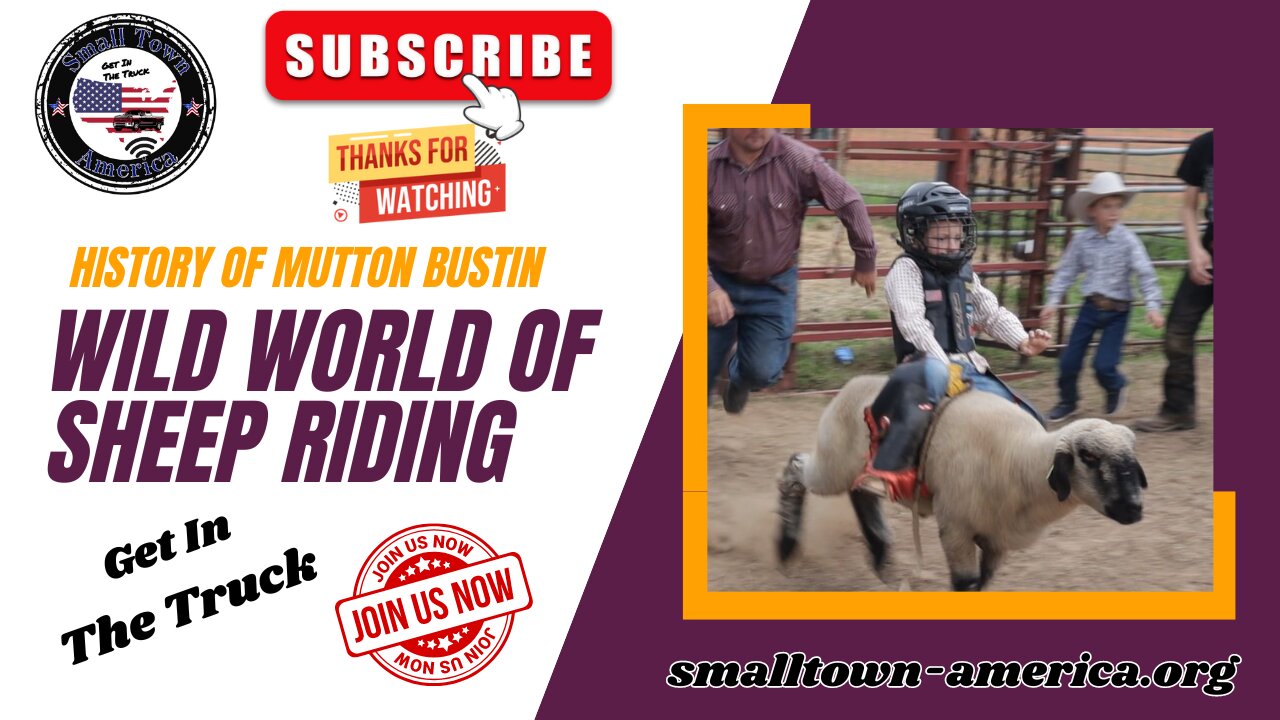Premium Only Content

History of Mutton Bustin The Wild World of Sheep Riding #youtubeshorts #travel #rodeo
History of Mutton Bustin The Wild World of Sheep Riding #youtubeshorts #travel #rodeo
In the event, a sheep is held still, either in a small chute or by an adult handler while a child is placed on top in a riding position. Once the child is seated atop the sheep, the sheep is released and usually starts to run in an attempt to get the child off. Often small prizes or ribbons are given out to the children who can stay on the longest. There are no set rules for mutton busting, no national organization, and most events are organized at the local level.
A contestant falling off the sheep
The majority of children participating in the event fall off in less than 8 seconds. Age, height and weight restrictions on participants generally prevent injuries to the sheep, and implements such as spurs are banned from use. In most cases, children are required to wear helmets and parents are often asked to sign waivers to protect the rodeo from legal action in the event of injury.
Mutton busting was first introduced by Jack Daines at the Daines Ranch Pro Rodeo, near Innisfail, Alberta, Canada in the early 1960s. He wanted an event that would keep the younger kids from riding the rougher stock. He brought some of the family sheep to the bucking chutes and the rest is history.
The practice has been documented as having been introduced in the United States at the National Western Stock Show at least by the 1980s when an event was sponsored by Nancy Stockdale Cervi, a former rodeo queen. At that event, children ages five to seven who weighed less than 55 pounds could apply, and ultimately seven contestants were selected to each ride a sheep for six seconds. There are no statistics about the popularity of the sport, but anecdotal reports suggest thousands of children participate in such events every year in the U.S
Get In The Truck Small Town America
smalltown-america.org
-
 LIVE
LIVE
PandaSub2000
5 days agoLIVE 9:30pm ET | MADISON VR (The Scariest Game Ever Made)
98 watching -
 2:34:32
2:34:32
Badlands Media
4 days agoCODEX 9/11
253K180 -
 1:53:43
1:53:43
Nerdrotic
5 hours ago $0.24 earnedMysteries of 3I/ATLAS | Forbidden Frontier #113
35.1K4 -
 2:04:21
2:04:21
vivafrei
1 day agoEp. 278: D.C. Peace Wave! Big Tish & Nipple Judge SPANKED! "Maryland Man" Trafficker FREE & MORE?
79.1K93 -
 LIVE
LIVE
Damysus Gaming
1 hour agoBorderlands 3 - Part 8 - FL4K Time | Children of the Vault be Warned!
47 watching -
 LIVE
LIVE
Patriots With Grit
4 hours agoWhat You Should Know About Harmful Vaccine Ingredients And What To Say To Your Doctor, Pediatrician, Health Department or School When They Pressure You, Your Kids Or Your Family Members | Dr. Bryan Ardis, D.C.
309 watching -
 LIVE
LIVE
This is the Ray Gaming
1 hour agoSunday Night Live with the Boys | Rumble Premium Creator
46 watching -
 LIVE
LIVE
ItsMossy
1 hour ago🍃NEW MIC WHO THIS🍃DRIVING SIM GO BRRR🍃420 SESH🍃
21 watching -
 LIVE
LIVE
THOUGHTCAST With Jeff D.
1 hour agoSunday night Fortnite With ScottishVikingGaming & crew
31 watching -
 LIVE
LIVE
a12cat34dog
2 hours agoSOLID DAWG RETURNS :: METAL GEAR SOLID :: 1998 IS UNFORGIVING {18+}
65 watching